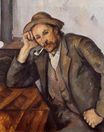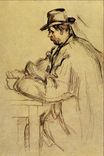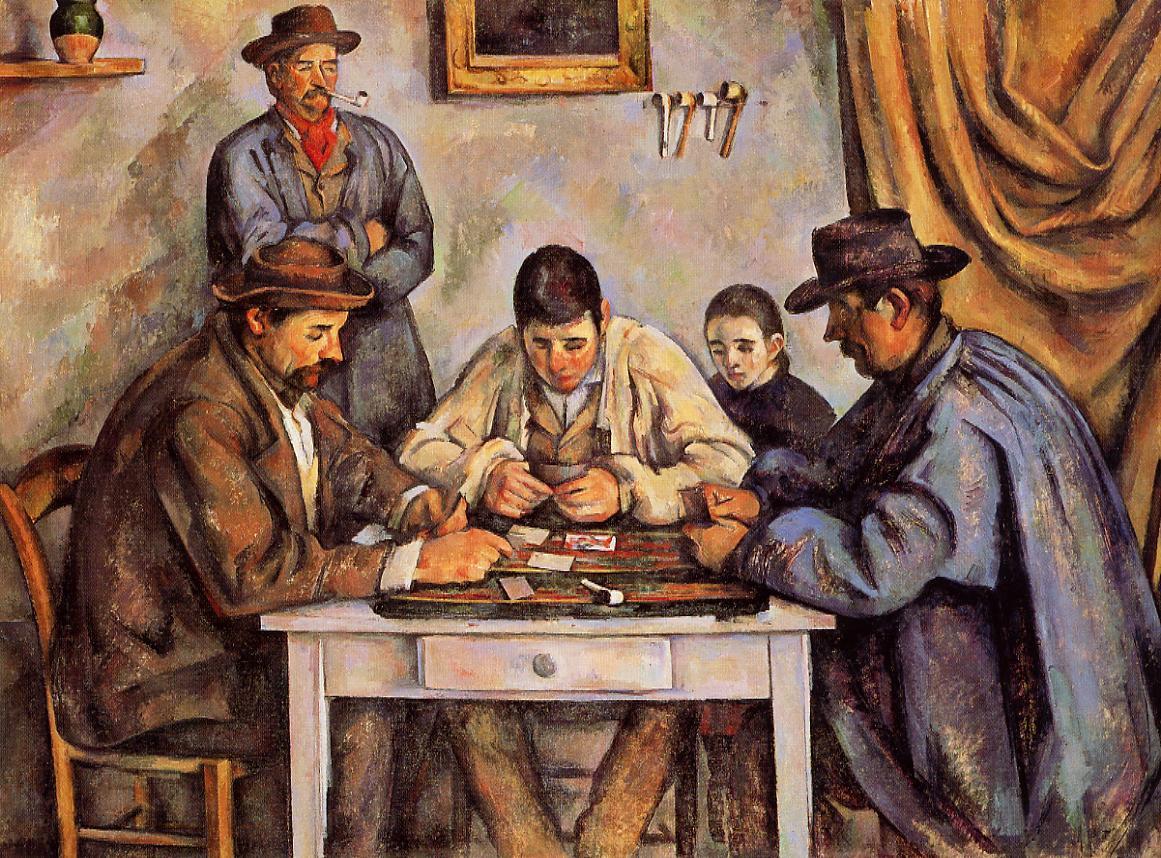Поль Сезанн - Игроки в карты 1892
 |
 |
 |
 |
 |
 |
 |

Игроки в карты 1892
135x181см холст/масло
The Barnes Foundation, Merion, Pennsylvania, USA
<< Previous G a l l e r y Next >>
From Wikipedia, the free encyclopedia:
Painted during Cézanne's final period in the early 1890s, there are five paintings in the series. The versions vary in size and in the number of players depicted. Cézanne also completed numerous drawings and studies in preparation for The Card Players series. One version of The Card Players was sold in 2011 to the Royal Family of Qatar for a price variously estimated at between $250 million and $300 million, making it the second most expensive work of art ever sold.
The series is considered by critics to be a cornerstone of Cézanne's art during the early-to-mid 1890s period, as well as a "prelude" to his final years, when he painted some of his most acclaimed work.
Each painting depicts Provençal peasants immersed in smoking their pipes and playing cards. The subjects, all male, are displayed as studious within their card playing, eyes cast downward, intent on the game at hand. Cézanne adapted a motif from 17th-century Dutch and French genre painting which often depicted card games with rowdy, drunken gamblers in taverns, replacing them instead with stone-faced tradesmen in a more simplified setting. Whereas previous paintings of the genre had illustrated heightened moments of drama, Cézanne's portraits have been noted for their lack of drama, narrative, and conventional characterization. Other than an unused wine bottle in the two-player versions, there is an absence of drink and money, which were prominent fixtures of the 17th century genre. A painting by one of the Le Nain brothers, hung in an Aix-en-Provence museum near the artist's home, depicts card players and is widely cited as an inspiration for the works by Cézanne.
The models for the paintings were local farmhands, some of whom worked on the Cézanne family estate, the Jas de Bouffan. Each scene is depicted as one of quiet, still concentration; the men look down at their cards rather than at each other, with the cards being perhaps their sole means of communication outside of work. One critic described the scenes as "human still life", while another speculated that the men's intense focus on their game mirrors that of the painter's absorption in his art.